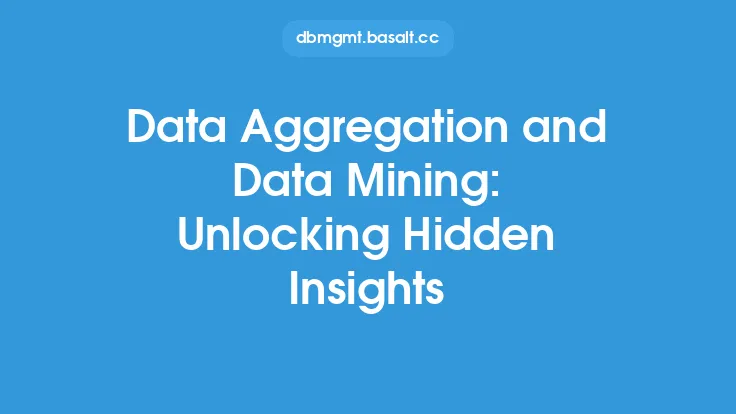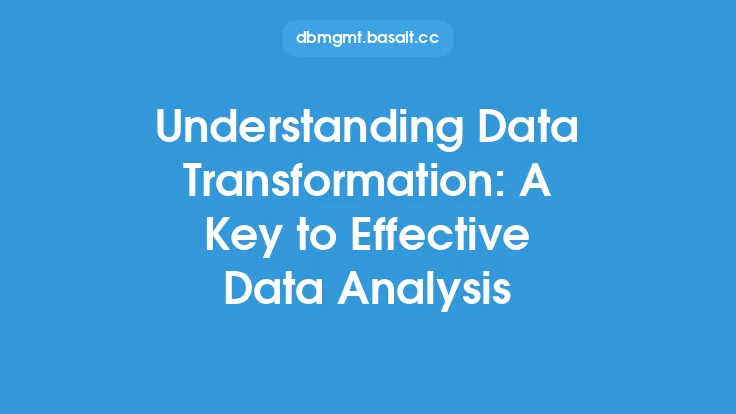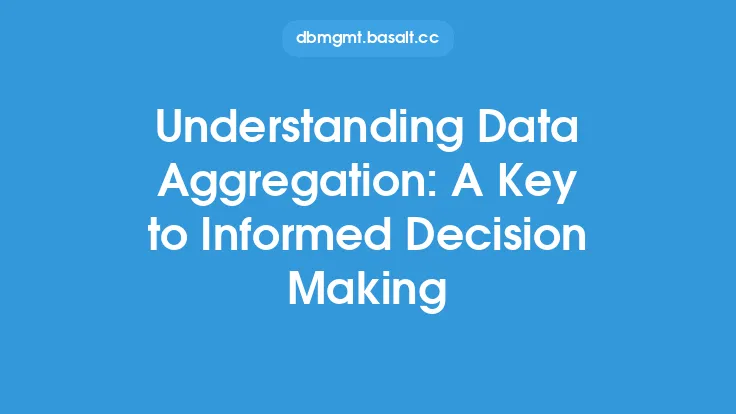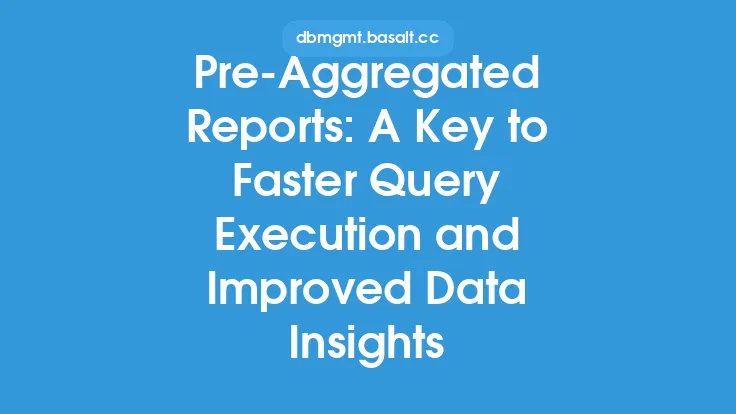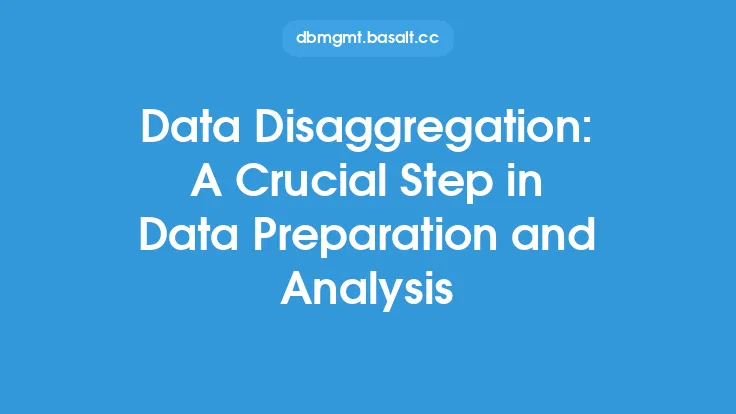Data normalization is a crucial process in data analysis that involves organizing and structuring data in a way that makes it easier to understand and analyze. One key aspect of data normalization is data disaggregation, which involves breaking down aggregated data into its constituent parts. This process is essential for unlocking hidden insights and gaining a deeper understanding of the data. In this article, we will explore the concept of data disaggregation, its importance, and how it can be used to extract valuable insights from data.
What is Data Disaggregation?
Data disaggregation is the process of breaking down aggregated data into smaller, more detailed components. Aggregated data refers to data that has been combined or grouped together, often to simplify analysis or reduce data complexity. However, aggregated data can mask important trends, patterns, and relationships that are only visible when the data is broken down into its constituent parts. Data disaggregation involves separating the data into its individual components, allowing for a more detailed and nuanced analysis.
Benefits of Data Disaggregation
Data disaggregation offers several benefits, including improved data accuracy, enhanced data analysis, and better decision-making. By breaking down aggregated data, analysts can identify trends and patterns that may not be visible at the aggregate level. This can lead to a deeper understanding of the data and the ability to make more informed decisions. Additionally, data disaggregation can help to reduce errors and inconsistencies in the data, leading to more accurate analysis and insights.
Types of Data Disaggregation
There are several types of data disaggregation, including temporal disaggregation, spatial disaggregation, and categorical disaggregation. Temporal disaggregation involves breaking down data into smaller time periods, such as from annual to monthly or daily data. Spatial disaggregation involves breaking down data into smaller geographic areas, such as from national to regional or local data. Categorical disaggregation involves breaking down data into smaller categories, such as from broad demographic categories to more specific sub-groups.
Techniques for Data Disaggregation
There are several techniques that can be used for data disaggregation, including data partitioning, data grouping, and data filtering. Data partitioning involves dividing the data into smaller subsets based on specific criteria, such as time or geography. Data grouping involves combining similar data points into groups, such as grouping customers by demographic characteristics. Data filtering involves selecting specific data points or subsets of data based on specific criteria, such as filtering out outliers or missing values.
Challenges and Limitations of Data Disaggregation
While data disaggregation offers several benefits, it also presents several challenges and limitations. One of the main challenges is data quality, as disaggregated data can be more prone to errors and inconsistencies. Additionally, data disaggregation can be time-consuming and resource-intensive, particularly for large datasets. Furthermore, data disaggregation can also raise privacy and security concerns, particularly when dealing with sensitive or personal data.
Best Practices for Data Disaggregation
To overcome the challenges and limitations of data disaggregation, it is essential to follow best practices, such as ensuring data quality, using appropriate techniques, and considering privacy and security concerns. Analysts should also be aware of the potential biases and limitations of the data and take steps to mitigate them. Additionally, data disaggregation should be done in a way that is transparent, consistent, and well-documented, to ensure that the results are reliable and reproducible.
Real-World Applications of Data Disaggregation
Data disaggregation has a wide range of real-world applications, including business intelligence, healthcare, finance, and social sciences. In business intelligence, data disaggregation can be used to analyze customer behavior, preferences, and demographics. In healthcare, data disaggregation can be used to analyze patient outcomes, disease trends, and treatment effectiveness. In finance, data disaggregation can be used to analyze market trends, risk factors, and investment opportunities. In social sciences, data disaggregation can be used to analyze social trends, demographic changes, and policy effectiveness.
Conclusion
Data disaggregation is a powerful technique for unlocking hidden insights and gaining a deeper understanding of data. By breaking down aggregated data into its constituent parts, analysts can identify trends, patterns, and relationships that may not be visible at the aggregate level. While data disaggregation presents several challenges and limitations, following best practices and using appropriate techniques can help to overcome them. As data continues to play an increasingly important role in decision-making, data disaggregation will become an essential tool for extracting valuable insights and driving business success.
